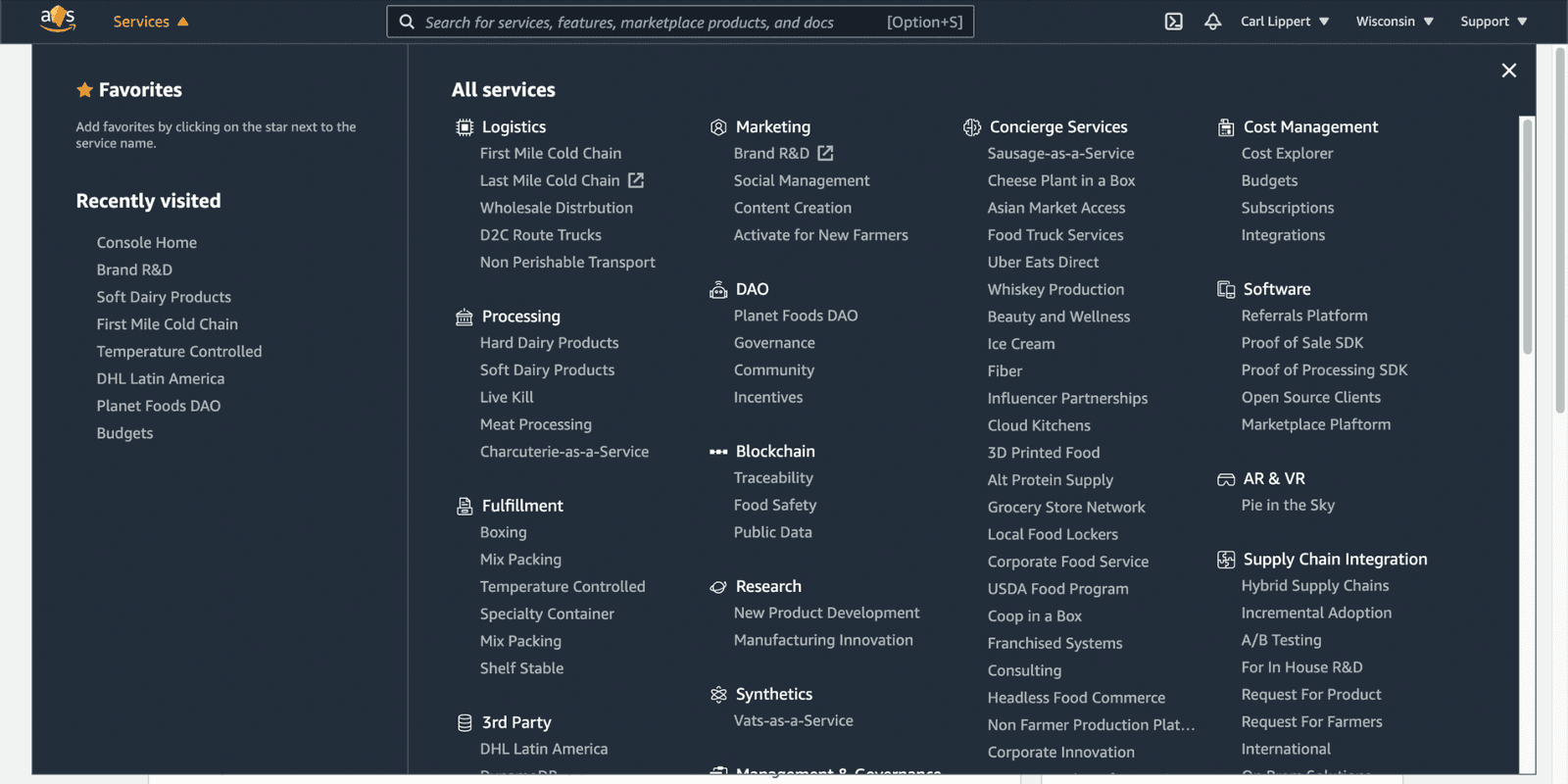What does going upmarket look like for farmers in the future?
Not like it does today if we have any luck or ambition.
Currently the status quo for most farmers going upmarket is about going direct and creating "value added" products.
Most farmers going upmarket don't invent something. Instead, they improve their margins by finding a more favorable location in the supply chain.
Going upmarket often requires an infrastructure investment and a bet that you can find the customers, do the marketing, and not hate yourself, or the work, or the customers.
Let's just hope the unit economics work too.
There is a spectrum of investment involved but even the small bets are painful.
Smaller commodity farms that want to find a better place in the supply chain have very little ability to bet big on themselves purely based on their margin structure.
Farmers taking on 30 years of debt to take a shot at making mild cheddar seems like a giant market failure to me.
The physical reality of this status quo is why you see many people focusing on grants and other forms of government assistance to help farms go upmarket.
If the primary path up is infrastructure, and all infrastructure is "bet the farm" infrastructure, farms with low margins can be coaxed into a better future by an injection of capital with fewer strings attached.
But this is only an ok future.
This is not a bright beautiful future.
We can do better.
This is where the AWS of Food comes in.
The real problem is that the infrastructure and services farms need to go upmarket are not being offered.
In the early days of software, companies physically had to rack servers in some back room in some office to get started.
Then they where liberated from this cost and drudgery by the cloud i.e. AWS.
This made it way easier to start a business and experiment.
Today farmers literally construct buildings and fill them with shiny stainless steel bits and bobs before having a single paying customer.
In the future they will be liberated from this risky and expensive activity by the AWS of Food.
Infrastructure as a Service (IaaS), with low barriers to entry, and a focus on food and agriculture, creates the bright future for farms and food the world wants and needs.
So what does this look like in practice?
Pretty straight forward IMO. ( but I've been called crazy )
It looks like a bunch of opt-in, composable systems, that are the restructured versions of the fulfillment, processing, and marketing that exist today.

Starting a Nootropic Butter company?
(Einstein Butter!: +10 Points on SAT guaranteed!)
Select First Mile Cold Chain, D2C Route Trucks, Brand R&D, and Social Management.
Doing D2C Charcuterie from your pastured pigs? ( fucking yummm )
They have a custom built service for that since there was a lot of demand. Charcuterie-as-a-Service.
But if you want something more custom you can still construct it on your own out of Live Kill, Meat Processing, Request for Farmers ( Local Cheese ), and Specialty Container Fulfillment.
All of these services come with a low barrier to entry ( sub $1000 ), no switching costs, no long term contracts required, and are infinitely scalable.
Create a product, sell it, evaluate, improve, repeat.
The systems are not as efficient as existing infrastructure when evaluated by throughput and cost but they make it up in dynamism.
Making good cheese is not the goal. Making the perfect product for your market and goals is.
High margin capture through experimentation in product, packaging, marketing and production is the goal. Not lowest cost production.
Rentable infrastructure for food production will destroy barriers to entry and explode product experimentation and value creation.
This is a beautiful future farms and consumers can get behind.
What product would you create if your farm had access to any infrastructure it wanted at basically no risk?
Don't wait. Start today!
DM me on twitter if you think I'm full of shit. Thats called learning if you're right and I'm wrong.
Less concise thinking and pragmatic notes
Doing AWS of Food is vey different than AWS.
The world of bits and atoms are very different.
There are many very difficult problems to be solved to make systems like this work. I expect you would want to co-locate a lot of this infrastructure nearish urban centers for both a natural aggregation point ( food flows from farm to people ) and since there would be a dramatic rise in costs for selection of different composable services if they had to suffer the cost of logistics between each process.
Envision something like a food safe Amazon fulfillment center where all infrastructure can be reconfigured and expanded over time since there is very little ability to know what systems would need to be expanded or contracted over time. Something much harder to navigate irl.
One bootstrapping possibility I have thought might work is creating R&D labs for mid sized food companies that have the capital and desire to run one but are just out of reach of having the ability to do so. NDA's all around and good contracts would allow you to purchase a wide range of specialty small batch infrastructure for R&D that also could be leveraged for small batch, composable manufacturing facilities for growing AWS of Food Line of business.
I do believe this could scale. It would be natural for this infrastructure to grow with its customers and to adopt larger customers, and smaller customers over time.
Cloud started with startups but 20 years later its taking on major government and defense contracts.
Silly little butter factory -> contract processing for trader joes in 20 years doesn't sounds like a stretch.
Some of this is already definitely happening already. It feels as though farms naturally are creating ad-hoc networks to access new butcher facilities and to get to things like farmers markets.
The cloud is not a single service provider anymore. If you use AWS you also likely use 3rd parties that are built on AWS and 3rd parties that are built on other infrastructure. If this model can be successfull those times of evolutions are likely but maybe less likely due to the reality of physical goods.
Perhaps the natural splits then happen between logistics / marketing / processing / legal boundaries like governments.
Whats the web3 of AWS of Food look like?
( leapfrogging is cool, centralization is dangerous )
Can you build an incentive structure that can bootstrap this via something like a token incentivized franchise model? Farmer owned infrastructure for maximum long term incentive alignment?
